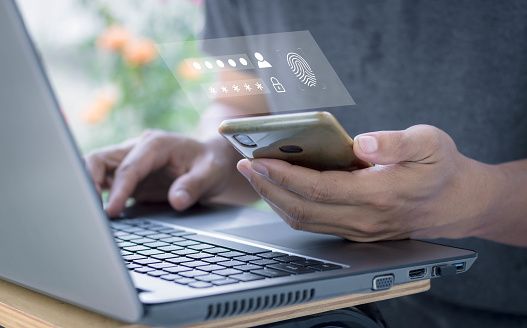In today's interconnected world, email has become a primary mode of communication for individuals and businesses alike. Unfortunately, cybercriminals have found ways to exploit email systems through a technique called spoofing, where they falsify email headers to deceive recipients and launch malicious attacks. To protect yourself and your organization from email spoofing, it's crucial to understand how to check email headers for signs of spoofing. In this comprehensive guide, we will delve into the world of email header analysis, providing expert insights, step-by-step instructions, and answers to common questions to help you identify and mitigate the risks of email spoofing.
Understanding Email Spoofing and its Risks

Email spoofing is a technique used by cybercriminals to forge the sender's identity in an email. By manipulating email headers, these attackers make it appear as if the email originated from a different sender than it actually did. Spoofed emails often imitate trusted sources, such as banks, government agencies, or well-known companies, tricking recipients into revealing sensitive information, clicking on malicious links, or downloading harmful attachments.
The risks associated with email spoofing are significant and include:
- Phishing Attacks: Spoofed emails are often used to deceive recipients into providing personal information, such as passwords, credit card details, or social security numbers. This information is then used for identity theft, financial fraud, or other malicious purposes.
- Malware Distribution: Cybercriminals frequently use spoofed emails to distribute malware or ransomware. Opening an attachment or clicking on a link in a spoofed email can lead to the installation of malicious software on your device, compromising your security and privacy.
- Business Email Compromise (BEC): In a BEC attack, cybercriminals impersonate executives or high-ranking employees to trick employees into performing unauthorized actions, such as wire transfers or sharing sensitive data. Spoofed emails play a significant role in these sophisticated social engineering attacks.
Now, let's explore how you can check email headers to identify signs of spoofing and protect yourself from these risks.

How to Check Email Headers for Spoofing

Checking email headers for spoofing involves analyzing the technical information contained within an email. This information can reveal crucial details about the email's origin, the path it traveled, and any signs of manipulation. Here's a step-by-step process to help you check email headers effectively:
Step 1: Access Email Header Information
- Different email clients and services provide varying methods to access email headers. Typically, you can find an option to view or show the full email header within the email client or web interface. Consult the documentation or support resources of your email provider to learn how to access email headers.
Step 2: Analyze Sender Information
- Look for the "From" field in the email header. Verify if the displayed sender matches the expected sender or if it appears suspicious. Pay attention to any misspellings, unusual characters, or variations in the sender's domain.
Step 3: Examine Return-Path and Reply-To Fields
- The "Return-Path" and "Reply-To" fields provide additional information about the email's source. Compare these fields with the sender's information in the "From" field to ensure consistency. Discrepancies or abnormalities could be indicators of spoofing.
Step 4: Evaluate IP Addresses
- Locate the "Received" or "X-Originating-IP" fields in the email header. These fields indicate the IP addresses of the servers through which the email traveled. Compare these IP addresses with the expected servers associated with the sender's domain. If the IP addresses don't match or are suspicious, it could indicate spoofing.
Step 5: Examine Authentication and Encryption
- Look for authentication mechanisms like SPF (Sender Policy Framework), DKIM (DomainKeys Identified Mail), and DMARC (Domain-based Message Authentication, Reporting, and Conformance). These mechanisms help verify the email's authenticity and protect against spoofing. Check if the email header includes information about these authentication methods. Lack of authentication or encryption can raise suspicions.
Step 6: Investigate Email Routing
- Review the "Received" fields in the email header to understand the path the email took from the sender to your inbox. Look for any unexpected or irregular server names, domains, or email services in the routing information. Unusual or untrusted servers could indicate spoofing attempts.
Step 7: Consult Online Tools and Resources
- Various online tools and resources are available to assist in email header analysis. These tools can automatically analyze email headers, identify potential spoofing indicators, and provide detailed reports. Consider using these resources for a comprehensive analysis of suspicious emails.
It's important to note that email header analysis requires technical knowledge and attention to detail. If you're uncertain or suspect a spoofed email, it's advisable to consult IT professionals or cybersecurity experts for assistance.
Frequently Asked Questions (FAQs)
Q1. Can email headers be forged by cybercriminals?
- Yes, email headers can be forged or manipulated by cybercriminals to deceive recipients. They can alter sender information, IP addresses, routing information, and other fields to make the email appear legitimate.
Q2. Are there specific email clients or services that are more susceptible to spoofing?
- Spoofing can occur with any email client or service. However, some providers have implemented robust security measures and authentication protocols to minimize the risks. It's essential to stay updated with the latest security features and enable any recommended settings provided by your email service provider.
Q3. What are some additional signs of email spoofing?
- In addition to checking email headers, there are other signs of email spoofing to be aware of. These include unexpected or suspicious requests for sensitive information, poor grammar or spelling errors in the email, and URLs that don't match the expected domain. Trust your instincts and exercise caution when encountering such emails.
Q4. Can antivirus software detect email spoofing?
- Antivirus software primarily focuses on detecting and protecting against malware and viruses. While some antivirus solutions may include features to identify phishing emails, their effectiveness in detecting email spoofing can vary. It's recommended to use a combination of antivirus software, email filters, and vigilant user awareness to mitigate the risks of email spoofing.
Q5. What should I do if I receive a spoofed email?
- If you receive a suspected spoofed email, do not reply, click on any links, or provide any personal information. Report the email to your email service provider or IT department. They can investigate the email, take appropriate actions to block future spoofed emails, and provide guidance on any necessary steps to protect yourself or your organization.
By following the steps outlined above and diligently checking email headers for signs of spoofing, you can enhance your email security and protect yourself from the risks associated with email spoofing. Remember to stay vigilant, trust your instincts, and seek professional assistance when necessary. Safeguard your digital communications and maintain a secure online presence.

